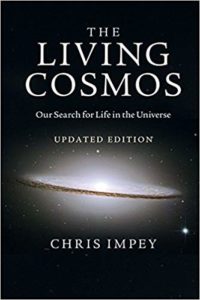According to the scientific definition, a gene is a distinct unit of information, in the form of a specific pattern of nucleotides that comprise part of a chromosome. Roughly translated into English, genes are packets or sequences of DNA (information) that specifically code for one protein, whereas a genome is the full genetic code, or set of rules, for a given organism. For example, the genome of a primate will have specific genes that define the development of fur, arms, and legs, while the genome of a bird will have certain genes that cause development of beaks, feathers, and wings. Both organisms will have genes responsible for developing heart, lungs, eyes, and other internal organs that almost all animals share in common, while also having enough genetic material that a single individual can be uniquely identified out of millions of other people. Only identical twins share the same DNA, but even they can be uniquely identified through their fingerprints. DNA is basically a recipe for how to create an organism from scratch. The average layperson may not be able to recognize an individual gene under a microscope, but any two experts in genetics should be able to identify the specific pattern of a known gene. Most of us have seen enough TV shows like NCIS and CSI delving into forensic police investigative work to know that leaving DNA evidence at the scene of a crime is just about as damning as a voluntary confession—unless the perpetrator can convince the jury that the evidence was planted in an attempt to frame them, the … [Read more...]
Calling the wrong guy stupid
Dr. Laurence Moran Laurence A. "Larry" Moran (and no, it's not really Moron) is apparently a pretty smart guy. He holds a PhD in biochemistry from Princeton University and served as a college professor for decades at the University of Toronto. He's probably best known for being one of the lead authors of a textbook called Principles of Biochemistry, although in fairness, his personal blog called Sandwalk also attracts a fair amount of internet traffic, which is how I learned about Dr. Moran--ironically enough, while searching the internet for information on Dr. James Tour. What has inspired me to write about my limited knowledge of Dr. Moran was the conclusion to his article harshly critical of Dr. Tour: I suppose I'm going to be labeled as one of those evil "Darwinists" who won't tolerate anyone who disagrees with me about evolution. I'm actually not. I just don't like stupid people who think they are experts in evolution when they have never bothered to learn about it. Here's my advice to graduate students in organic chemistry: if you want to know about evolution then take a course or read a textbook. And remember, there's nothing wrong with admitting that you don't understand a subject. Just don't assume your own ignorance means that all the experts in the subject are wrong too. [emphasis added]Laurence A. Moran, "A chemist who doesn't understand evolution" Wow. If I'm not mistaken, Dr. Moran just described Dr. Tour as being a stupid person. So I'm wondering, is it possible that a chemistry professor wouldn't know who Dr. Tour is? How could he not know? … [Read more...]
Falsifying evolution
The Zapata footprint According to Karl Popper, the ultimate test of whether a theory was scientific or philosophic was whether or not the theory could be falsified, meaning it could be tested according to the scientific method and theoretically proved to be untrue by solid contradictory evidence. J.B.S. Haldane once joked that the best evidence to disprove Darwinian theory would be a fossilized rabbit in Precambrian rock strata, because rabbits allegedly didn't "evolve" until several hundred million years after the Cambrian extinction event had elapsed. Haldane didn't realize it at the time, but his joke has ultimately shown that Darwinian evolution cannot be falsified. The theory of evolution has become the equivalent of religious dogma that simply cannot be challenged or questioned. Consider the Zapata footprint above. If the print was found on a sandy beach, no one would question for a moment whether it was a genuine footprint created by a human being. However, this particular print was discovered in rock allegedly 250 million years old. Scientific tests should be able to provide a reasonably accurate age for the rock, and additional experiments should be able to demonstrate how the footprint could have been faked, assuming the fossil is not genuine. Likewise, the image below allegedly shows a human footprint and a dinosaur footprint fossilized in the same layer of rock. Perhaps there is some plausible explanation for these fossils, and they only look like human and dinosaur footprints that are neither deliberate frauds, nor what they appear to be. Or … [Read more...]
Thoughts on The Living Cosmos by Chris Impey
Science is a discipline that theists should be able to enjoy and appreciate--after all, theists invented science in their quest to learn about God. Science should not seen as a potential threat to religious belief. Anyone who claims that science somehow eliminates any need for a God simply doesn't understand existential science very well. Over the past decade or so, I've read a number of "popular" books about biology, paleontology, cosmology, Darwin's theory of natural selection (or "evolution") and other related topics in a personal quest for answers to my personal philosophical/existential questions: Who am I? Why am I here? How did I come to exist? When contemplating those questions one must also ask related questions like: How was the universe created? How did life originate? These latter questions are considered scientific by nature. Of the numerous books I've consumed on related subjects, among the very best I've read was a book titled The Living Cosmos written by Chris Impey, an astronomy professor at the University of Arizona. While I disagreed with some of Professor Impey's conclusions, he is without question an extremely talented writer. He mixes in plausible-sounding scenarios that create vivid imagery that convey his secular ideology regarding religion and evolution, whether he's providing a fictionalized account of the martyrdom of Giordano Bruno or one of an asteroid strike causing the K-T extinction, while grazing dinosaurs remained oblivious to their imminent doom. Professor Impey very accurately described the highly improbable cosmological … [Read more...]
Common descent versus common design
My latest "Eureka!" moment while arguing that Charles Darwin's famous theory of common descent with modification is actually a rather pathetic explanation for the modern diversity of life came when I realized that the work of Gregor Mendel had been purloined by evolutionary biologists and made the centerpiece of their argument. Clearly, Mendel's research into genetic recombination demonstrated how descent with modification produced variety in plants, and it stood to reason to assume that the same sort of variety was produced by sexual reproduction by animals. Indeed, anyone brave (or foolish) enough to express skepticism at the idea that Charles Darwin's theory explains the origin of new species had better be prepared for an unprecedented degree of anger, scorn, ridicule, and frequent suggestions to consider remedial biology classes. The question remains: does Mendel's work truly explain the origin of new species, or is that explanation flawed? The idea sounds preposterous on the surface, sort of like the plot of a bad science fiction movie titled Planet of the Furless Apes. Darwin famously scribbled "Monkeys make men" in one of his notebooks to capture the idea that modern evolutionary biologists might call "changes of accumulations in allele frequency changes", which is a fancy way of saying that humans evolved from apes when certain DNA patterns become dominant while others become recessive. Humans lost their fur, grew physically smaller but developed bigger brains, simply because we could. It is theoretically possible, and the only other potential explanation in … [Read more...]




